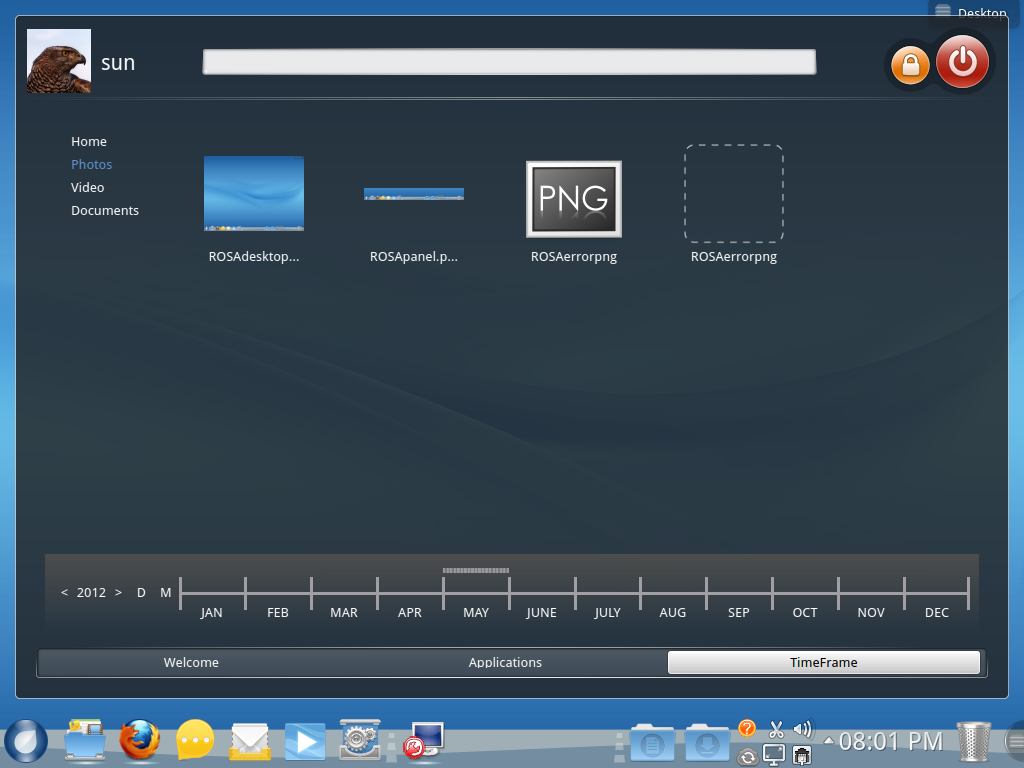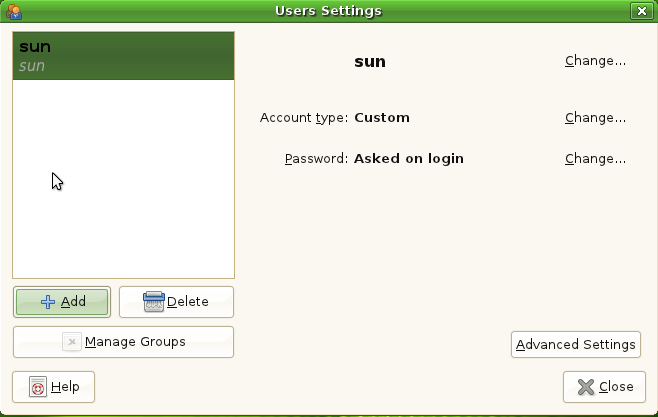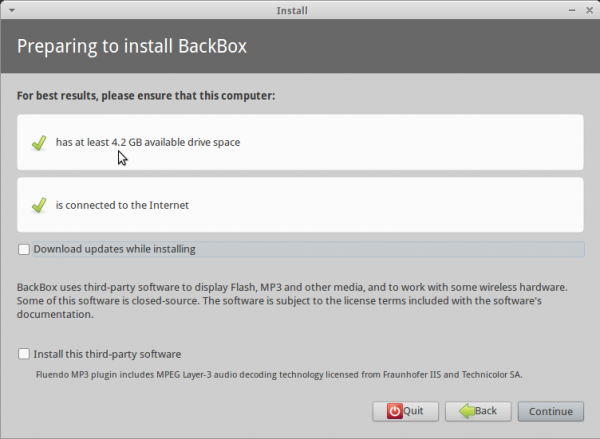Aside from KDE-specific graphical management applications used to configure the desktop, all the higher-level graphical application used to manage the system are in ROSA Control Center. Because ROSA Marathon is derived from Mandriva, you might be tempted to believe that the management applications in ROSA Control Center are the same as those in Mandriva Control Center (MCC).
While they may look the same and have the same features and functionalities, behind the scenes, things are, in may cases, different. For example, drakxservices, which is used to manage services in Mandriva, has been replaced with system-config-services. You can see a complete list of management applications and their replacements here. This screen shot shows the main interface of ROSA Control Center, with the Security tab in focus. Readers familiar with MCC will notice right away that a fifth security application is missing from this view. More on that in the section on security.

Managing services on ROSA Marathon can be accomplished using the old initscripts or the newer systemd daemon from the command line. If working from the command line does not appeal to you, you can use the aforementioned system-config-services for a point-and-click management of services. The screen shot below is of the tools interface.

Aside from system-config-services, another tool worth mentioning here, is ROSA Sync, a graphical interface to 2Safe, ROSA’s cloud storage service. Signing up for 2Safe gives you 2 GB of free cloud file storage capacity. I signed up for 2Safe last year when Mandriva 2011 was released. I have not accessed the service since then, and have forgotten my password. It just so happens that 2Safe has no facility for password reset. At least none that I can see anyway. Therefore, I am unable to use the service using my existing account. I could set up a new account, but being able to reset a forgotten password is the proper way to handle stuff like this. ROSA Sync’s main view is shown below.

On the security front, a new installation of ROSA Marathon has three open ports. These are ports 111 (rpcbind), 139 ( ) and 445 (microsoft-ds). There should be no issue with having those ports open if the firewall is enabled by default. Unfortunately, it is not, which is not a very good idea. I have given my opinion for why a network-connected computer needs to have a firewall activated elsewhere, so I am not going to go into any details about it here. Aside from the inactive firewall, the Mandriva security package (Msec) is not installed. Msec is one of the best automated security monitoring applications available on any Linux distribution. The official Wiki page has this to say about it:
The Mandriva Linux Security package is designed to provide security features to the Mandriva Linux users. It allows to select from a set of preconfigured security levels, and supports custom permission settings, user-specified levels, and several security utilities. This packages includes main msec application and several programs that will be run periodically in order to test the security of your system and alert you if needed.
I have no idea why it is not installed, but it is good to know that it is in the repository. I hope the developers have a good reason it is not installed, because without the firewall and Msec, a new installation ROSA Marathon 2012 has a very bad network security posture. If Msec is installed, you should see a fifth application on the Security tab of ROSA Control Center (see the third image above this paragraph).
I am sure I left out something from this review, but this should be more than enough to give you an idea what to expect from this distribution and help you decide if it is worth putting on your distro-hopping list. For me, it is good enough that it will replace the Debian-based distribution on my laptop and the Ubuntu-based one on the computer that I am writing this from. Not right away, but as soon as I have some spare time.
The few negatives that I identified in this review have easy fixes. Activation of the firewall is a point-click task, and Msec can be installed easily. With the /home partition encrypted, I think I will be happy with a production installation of ROSA Marathon 2012. Hopefully, the developers will consider tweaking the installer to have full support for disk encryption and put back the option to password-protect GRUB during the boot loader configuration step of the installation process.
Resources: You may download 32- or 64-bit ISO installation images of ROSA Marathon 2012 from here. And you may also read the Release Notes. Your comments, in any language, are always welcomed.
Screen Shots: View more screen shots from my test installations of ROSA Marathon 2012.
Just another look at the login screen. meow

SimpleWelcome showing a few installed software on the Applications tab.

SimpleWelcome showing the TimeFrame tab. TimeFrame makes it easy to access previously used documents based on date. You can tell that I have not used this installation for more than a month.

StackFolder is one of my favorite applications. This screen shot show images from the Pictures folder as they appear in StackFolder.

Web interface for 2Safe, ROSA’s cloud storage service.









Thanks for your review!
BTW, if you enable contrib repository – you can find Calligra Office Suite in it.
My impression from Rosa 2012: http://linuxblog.darkduck.com/2012/05/how-fresh-is-dew-rosa-2012-marathon.html
It is slightly different from yours…
Good indepth review. Keep up the Great work!
..or how about this, because that sentence doesn’t make sense without several re readings:
If it could not detect a copy of itself already on the drive, it was not surprising it couldn’t detect any distributions already present on the hard drive, even on the partition targeted for installation.
no wider — you mean “no wonder”
cheers,
John
Thank you, feedback of this sort is a good thing.